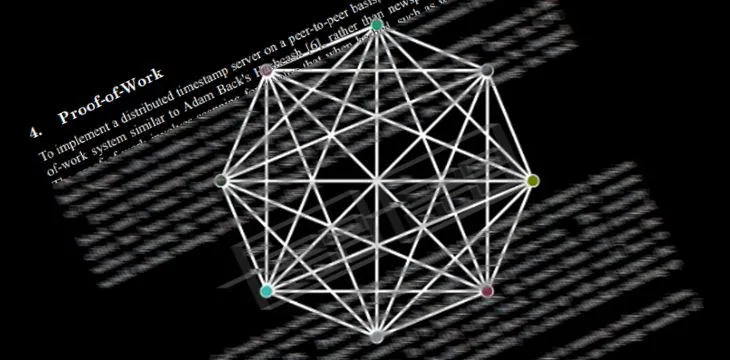|
Getting your Trinity Audio player ready...
|
What happens to Bitcoin‘s economics when it hits global scale? Is proof of work an efficient or inefficient use of energy? Why is Adam Back the only individual quoted by name in the Bitcoin White Paper? Bitcoin creator Dr. Craig S. Wright and Fabriik’s Ryan X. Charles answer all those questions and a lot more in this latest episode of “Theory of Bitcoin – The White Paper.”
Yes… about Adam Back
Since a large part of the conversation concerns Bitcoin’s proof of work system for processing transactions, many of the topics in this episode expand on those covered previously—especially in last week’s episode, if you haven’t caught it yet.
“… we will need a proof of work system similar to Adam Back’s HashCash, rather than newspapers or Usenet posts.”
Charles asks why Adam Back’s work is mentioned so specifically in the white paper, since no other figure from the history of this field gets a mention. The answer is actually quite mundane—Back (who now heads BTC Core backers Blockstream and is a fierce critic of both Dr. Wright and Bitcoin BSV) was simply the only person who responded all those years ago when Wright contacted previous researchers, allbeit with some skepticism that something like Bitcoin could actually work.
Adam Back proposed Hashcash in 1997 and published a paper on it in 2002. Despite the name, it was not a cryptocurrency but a method to combat spam traffic on the Internet. Dr. Wright explains that its implementation in Bitcoin is quite different to the original. Hashcash, he says, required each user to generate their own proof of work. By putting that work in the hands of “miners” (processors), He describes Bitcoin instead as a system where processors do the work and users “purchase” it.
Proof of work often receives criticism for being “inefficient” and a “waste of energy,” since most of the energy processing machines use to find blocks doesn’t produce anything (only one of them finds the block and receives the fees/block coin base).
But wait—this is all very subjective. Bitcoin wouldn’t work if only one machine processed all the blocks, so those other machines are actually contributing something. And as Charles points out, processing/mining also signals “proof of seriousness” (a topic covered last week). A processor’s investment in their operation represents their trustworthiness and dedication to performing their task correctly (and legally).
Peacocks’ tails as proof of work
Whether time and energy spent pursuing an objective is “wasted” or well-spent is also subjective, depending on how much importance you place on that goal. There are probably billions of examples we could use, but Dr. Wright prefers the one about the peacock’s tail: it’s inefficient in the movement and survival sense, and actually a handicap to its owner—but it’s also pretty, helps to attract a mate (thus continuing the species) and “proves” to others that the bird is so virile he can survive despite such a hindrance.
“If peacocks had smaller tails they’d be more efficient. But they wouldn’t be peacocks, they’d be turkeys.”
This leads to a discussion of how processors might coordinate and allocate their energy usage in the future, once Bitcoin hits a massive scale. This actually alters Bitcoin’s economics (on the processor and energy supplier side, not Bitcoin’s incentives themselves) as transactions grow in number and processors find themselves doing much more than simply hashing to find blocks.
It also (perhaps inevitably) leads to comparisons with POW’s main “rival,” proof of stake (or POS). Unlike POW, Dr. Wright says, POS does not signal who has invested in the network, therefore reducing trust in their good intentions. It’s also harder to dislodge incumbent power players if they’re not acting properly, and provides less chance for new players to enter the processing industry. This is a topic that’s hard for the non-initiated to understand, and indeed it takes someone like Dr. Wright to explain it even to most veteran Bitcoiners.
The conversation also touches on human behavior and ethics in economics, and how this side of things tends to get ignored—to demonstrate, Dr. Wright once again dismantles George Akerlof’s classic “market for lemons” theory.
Watch the latest episode to hear more about all this, why BTC Core developers are similar to the pigs in Orwell’s “Animal Farm,” and what the consequences for Blockstream and other Satoshi Nakamoto claimants might be at some future point. “Theory of Bitcoin” is as entertaining as it is educational, and as always, you’re guaranteed to come away with a deeper understanding of Bitcoin and its universe than you had before.
To watch previous episodes of the Theory of Bitcoin, check the Theory of Bitcoin: White Paper YouTube playlist here.

 07-08-2025
07-08-2025 





